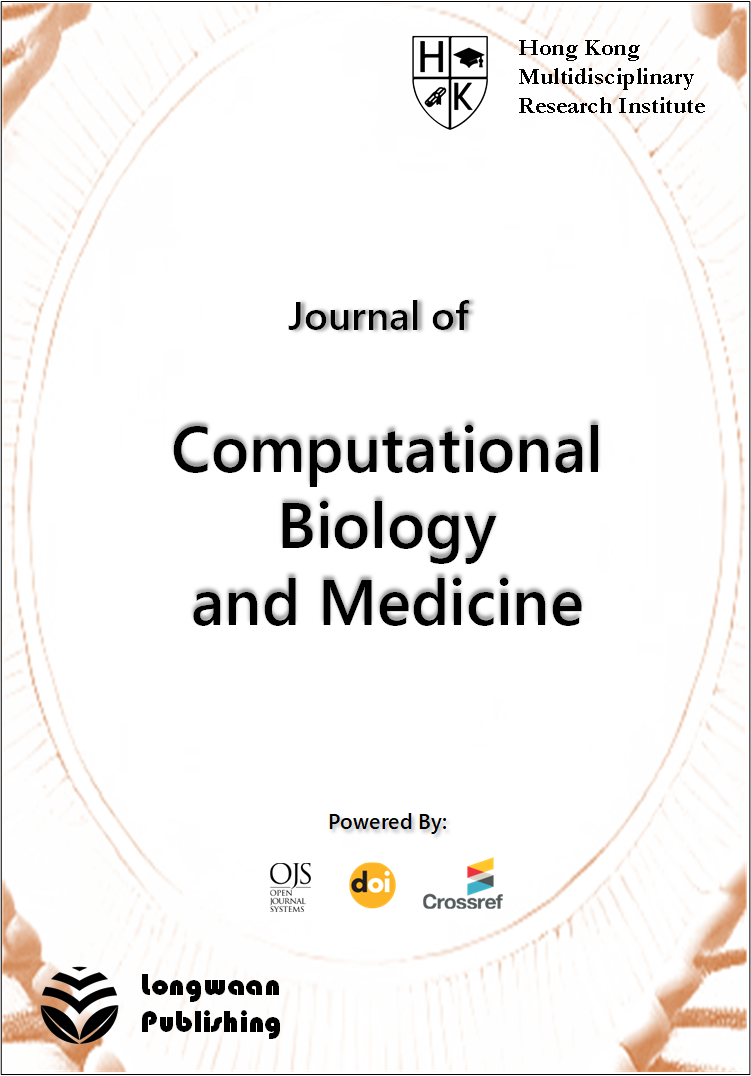Published 2025-01-26
Keywords
- Neural Circuit Modeling,
- Model Parameter Optimization,
- Genetic Algorithm,
- Parameter Space Exploration,
- Simulation Accuracy
How to Cite
Abstract
Neural circuit modeling is essential for understanding brain functions, but current research faces challenges in efficiently optimizing model parameters. This paper highlights the necessity of developing novel approaches to improve the accuracy and efficiency of neural circuit modeling. Presently, researchers encounter difficulties in effectively exploring the vast parameter space and optimizing complex neural network models. To address these challenges, this study proposes an innovative approach utilizing an efficient genetic algorithm for neural circuit modeling. Our work focuses on optimizing model parameters and enhancing the accuracy of neural circuit simulations. This research contributes to advancing the field of neural circuit modeling by offering a more effective and robust methodology for exploring and optimizing complex neural networks.
References
- J. Lei, "Efficient Strategies on Supply Chain Network Optimization for Industrial Carbon Emission Reduction," arXiv preprint arXiv:2404.16863, 2024.
- L. Jihu, "Green supply chain management optimization based on chemical industrial clusters," arXiv preprint arXiv:2406.00478, 2024.
- P.-M. Lu and Z. Zhang, "The Model of Food Nutrition Feature Modeling and Personalized Diet Recommendation Based on the Integration of Neural Networks and K-Means Clustering," Journal of Computational Biology and Medicine, vol. 5, no. 1, 2025.
- M. Ikeda et al., "Context-dependent operation of neural circuits underlies a navigation behavior in Caenorhabditis elegans," Proceedings of the National Academy of Sciences, vol. 117, no. 11, pp. 6178-6188, 2020.
- J. Gjorgjieva, J. Berni, J. F. Evers, and S. J. Eglen, "Neural circuits for peristaltic wave propagation in crawling Drosophila larvae: analysis and modeling," Frontiers in computational neuroscience, vol. 7, p. 24, 2013.
- H. Lin et al., "Neural bursting and synchronization emulated by neural networks and circuits," IEEE Transactions on Circuits and Systems I: Regular Papers, vol. 68, no. 8, pp. 3397-3410, 2021.
- P. Dayan and L. F. Abbott, Theoretical neuroscience: computational and mathematical modeling of neural systems. MIT press, 2005.
- R. M. Hasani, D. Haerle, C. F. Baumgartner, A. R. Lomuscio, and R. Grosu, "Compositional neural-network modeling of complex analog circuits," in 2017 International Joint Conference on Neural Networks (IJCNN), 2017: IEEE, pp. 2235-2242.
- K. Hakhamaneshi, M. Nassar, M. Phielipp, P. Abbeel, and V. Stojanovic, "Pretraining graph neural networks for few-shot analog circuit modeling and design," IEEE Transactions on Computer-Aided Design of Integrated Circuits and Systems, vol. 42, no. 7, pp. 2163-2173, 2022.
- P. Miller, "Dynamical systems, attractors, and neural circuits," F1000Research, vol. 5, pp. F1000 Faculty Rev-992, 2016.
- A. I. Selverston, "Modeling of neural circuits: what have we learned?," (in eng), Annu Rev Neurosci, vol. 16, pp. 531-46, 1993, doi: 10.1146/annurev.ne.16.030193.002531.
- M. Andrejevic and V. Litovski, "Electronic circuit modeling using artificial neural network," J Autom Control, vol. 13, pp. 31-37, 2003.
- Y. Jia and J. Lei, "Experimental Study on the Performance of Frictional Drag Reducer with Low Gravity Solids," Innovations in Applied Engineering and Technology, pp. 1-22, 2024.
- K. Deb, S. Agrawal, A. Pratap, and T. Meyarivan, "A fast elitist non-dominated sorting genetic algorithm for multi-objective optimization: NSGA-II," in International conference on parallel problem solving from nature, 2000: Springer, pp. 849-858.
- K. Deb, A. Pratap, S. Agarwal, and T. Meyarivan, "A fast and elitist multiobjective genetic algorithm: NSGA-II," IEEE transactions on evolutionary computation, vol. 6, no. 2, pp. 182-197, 2002.
- H. Li and Q. Zhang, "Multiobjective optimization problems with complicated Pareto sets, MOEA/D and NSGA-II," IEEE transactions on evolutionary computation, vol. 13, no. 2, pp. 284-302, 2008.
- G. Jones, P. Willett, R. C. Glen, A. R. Leach, and R. Taylor, "Development and validation of a genetic algorithm for flexible docking," Journal of molecular biology, vol. 267, no. 3, pp. 727-748, 1997.
- P.-M. Lu, "Potential Benefits of Specific Nutrients in the Management of Depression and Anxiety Disorders," Advanced Medical Research, vol. 3, no. 1, pp. 1-10, 2024.
- G. M. Morris et al., "Automated docking using a Lamarckian genetic algorithm and an empirical binding free energy function," Journal of computational chemistry, vol. 19, no. 14, pp. 1639-1662, 1998.
- P.-M. Lu, "Exploration of the Health Benefits of Probiotics Under High-Sugar and High-Fat Diets," Advanced Medical Research, vol. 2, no. 1, pp. 1-9, 2023.
- P. Liashchynskyi and P. Liashchynskyi, "Grid search, random search, genetic algorithm: a big comparison for NAS," arXiv preprint arXiv:1912.06059, 2019.
- A. Lambora, K. Gupta, and K. Chopra, "Genetic algorithm-A literature review," in 2019 international conference on machine learning, big data, cloud and parallel computing (COMITCon), 2019: IEEE, pp. 380-384.
- S. Patni and B. Sharma, "Genetic algorithms for decision optimization," in Intelligent Decision Making Through Bio-Inspired Optimization: IGI Global, 2024, pp. 29-39.
- D. J. Zwickl, Genetic algorithm approaches for the phylogenetic analysis of large biological sequence datasets under the maximum likelihood criterion. the University of Texas at Austin, 2006.
- S. Mirjalili and S. Mirjalili, "Genetic algorithm," Evolutionary algorithms and neural networks: Theory and applications, pp. 43-55, 2019.

